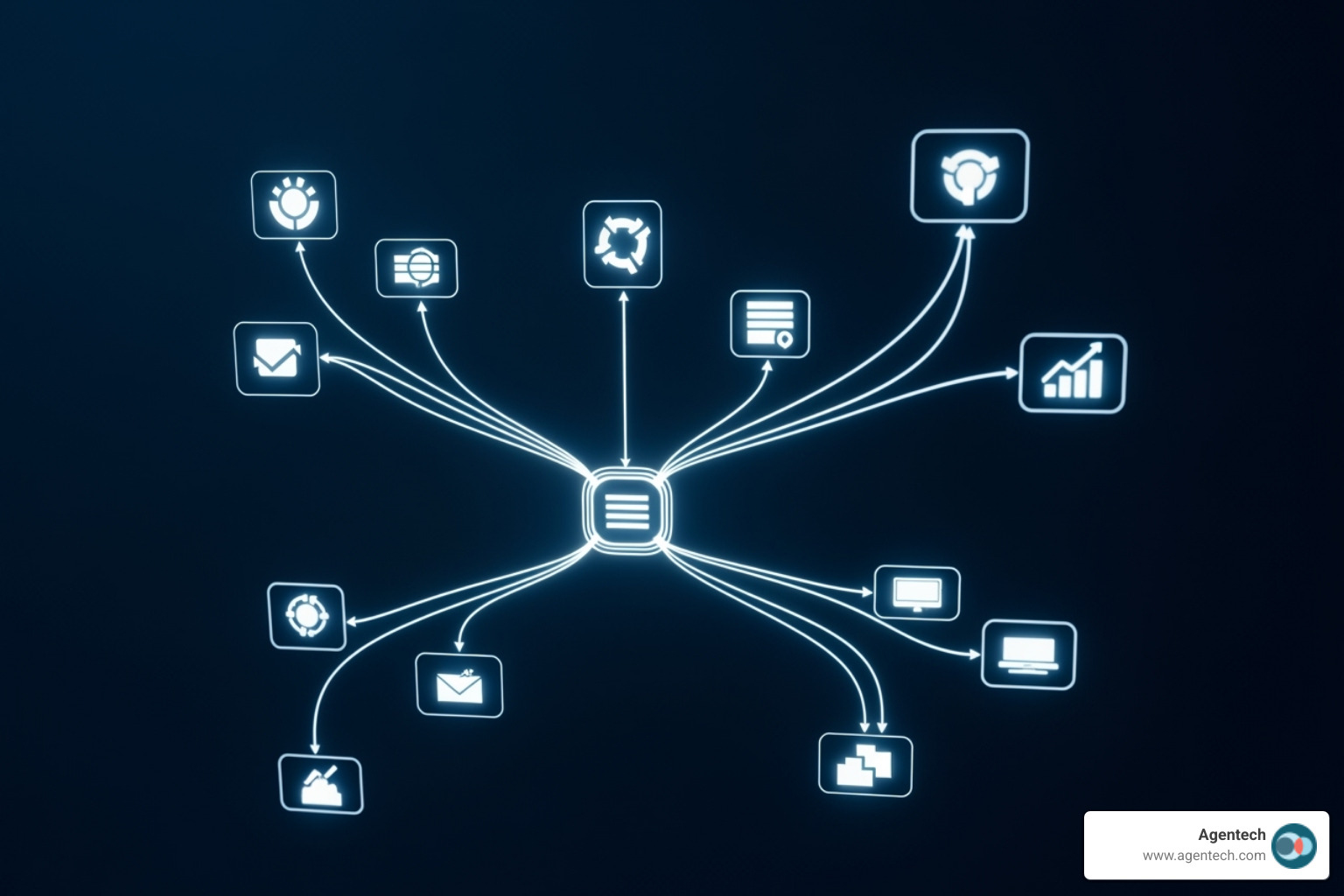Why Modern P&C Insurance Needs Claim Management Automation Solutions
Claim management automation solutions are revolutionizing how Property & Casualty (P&C) insurance carriers process claims. By replacing manual workflows with real time digital experiences, these AI powered platforms automate repetitive tasks, cut processing time by up to 80%, and settle over 50% of claims automatically with 96% accuracy. Key solutions include AI powered document processing, automated workflow management, fraud detection, and real time settlement tools that integrate with existing policy and billing systems.
The numbers tell a compelling story. While 87% of customers say claims experiences influence their decision to stay with a P&C insurer, many P&C carriers struggle with outdated processes. Claims leakage alone costs the US industry $67 billion annually, representing a significant portion of total claim payments.
The pressure is mounting. Twenty-one percent of customers now expect claims to be settled within hours, yet 43% currently wait over two weeks for resolution. Meanwhile, P&C insurance companies face high turnover rates as adjusters leave due to the burden of repetitive manual work.
This is where automation becomes essential. Modern claim management automation solutions don't replace human expertise; they amplify it. By handling routine data entry, document processing, and simple claim decisions, these platforms free adjusters to focus on complex cases requiring human judgment and customer service.
As Alex Pezold, founder of Agentech AI, I've spent years building technology that scales operations efficiently. At Agentech, we are focused on developing claim management automation solutions that transform P&C insurance operations, starting with pet insurance and expanding across property, auto, and workers' compensation lines.
The Challenge of Traditional P&C Claims Processing
For many P&C insurance carriers, TPAs, and IA firms, traditional claims processing remains a major source of inefficiency. The reliance on manual workflows creates significant challenges that impact the entire business, from operational costs to customer satisfaction.

Manual data entry is at the heart of the problem. Adjusters spend hours each day copying information from documents, emails, and faxes into multiple systems. This repetitive work is not only tedious but also prone to human error. A single mistyped policy number or incorrect damage amount can cause a ripple effect of incorrect payouts and compliance issues.
These inefficiencies lead to high operational costs and contribute to claims leakage, where insurers pay more than necessary. For US P&C insurers, claims leakage costs an estimated $67 billion annually. The slow processes also result in slow resolution times. While 21% of customers expect claims to be settled within hours, 43% wait over two weeks for a resolution, leading to frustration and dissatisfaction.
This environment also contributes to high employee turnover rates of 12% to 15% in the P&C insurance industry. Experienced adjusters burn out from repetitive manual work and seek better opportunities, creating a constant cycle of hiring and training. We dive deeper into this challenge in our article on Solving the Insurance Labor Crisis with AI Driven Innovation.
Traditional claims processing creates a web of problems that claim management automation solutions are uniquely positioned to solve, eliminating pain points while making jobs more rewarding.
Why Customer Experience in Claims Matters
The claims process is a critical moment of truth. For most policyholders, it's their primary interaction with a P&C insurer, and the experience directly shapes their loyalty. Research shows that 87% of customers say claims experiences influence their decision to stay with a P&C insurer. A smooth, caring claims experience can turn a stressful event into proof that they chose the right P&C insurer.
Positive experiences drive policyholder retention, which is far more cost effective than acquiring new customers. Your brand reputation also depends on how you handle claims. In today's connected world, a frustrated policyholder can easily share their negative experience online, damaging your brand.
Conversely, companies that excel at claims processing gain a significant competitive advantage. They attract new customers through positive word of mouth and build the loyalty that drives sustainable growth. We explore this topic further in Designing for the Future: How AI Transform the Claims Experience.
How Technology is Changing Claims Operations
Technology, particularly artificial intelligence (AI), is fundamentally reshaping how P&C claims are managed, ushering in an era of greater efficiency, accuracy, and customer satisfaction.

Claims process automation uses technology to streamline the manual steps that have bogged down claims processing for decades. Instead of adjusters spending hours on paperwork, intelligent systems handle these repetitive tasks, allowing humans to focus on complex decision making and customer service. This change impacts the entire claims journey, from First Notice of Loss (FNOL) to final settlement.
Automation dramatically improves efficiency and accuracy. With machines handling routine data validation and document processing, everything moves faster and with fewer errors. The result is faster cycle times, with some claims being processed in days instead of weeks. This can lead to a 25% jump in customer satisfaction and a drop in claims expenses of up to 50%. We dive deeper into these applications in our article on AI Claims Processing Insurance.
Key Technologies Driving Automation
Modern claim management automation solutions rely on several sophisticated technologies working in concert.
- Artificial Intelligence (AI) acts as the brain, enabling systems to learn from past claims and make recommendations. Our "Agentic AI" approach positions digital assistants as trusted partners for human adjusters. Learn more in Agentic AI in Insurance: When Bots Become Your Best Agents.
- Machine Learning (ML) allows systems to improve automatically by reviewing patterns in claims data, flagging issues, and predicting outcomes with high accuracy.
- Robotic Process Automation (RPA) handles repetitive, rule based tasks like data entry and form filling, freeing up human adjusters for more complex work.
- Optical Character Recognition (OCR) converts paper documents, PDFs, and photos into structured digital data, speeding up data capture and reducing manual errors.
- Natural Language Processing (NLP) helps computers understand human language, making it possible to extract key information from claim narratives, emails, and policy documents.
These technologies combine to create a more efficient, accurate, and intelligent claims ecosystem.
Enhancing Fraud Detection and Risk Mitigation
Automation provides a powerful defense against fraud, which accounts for roughly 10% of property and casualty claims. AI and Machine Learning systems can analyze vast amounts of data to identify fraudulent activity far more effectively than manual reviews.
Pattern recognition and data analysis spot subtle connections that may indicate fraud, while anomaly detection flags statistically unusual activity, such as a repair shop consistently submitting similar bills. Each claim receives a risk score, allowing high risk claims to be prioritized for human investigation while legitimate claims are processed quickly.
These systems also cross reference external data to validate information and continuously learn from confirmed fraudulent claims, becoming more effective over time. This allows P&C carriers to reduce fraud exposure while expediting legitimate claims, improving both efficiency and customer satisfaction. We explore the broader implications in AI in Insurance: Balancing Innovation and Regulation.
The Tangible Benefits of Claim Management Automation Solutions
Implementing claim management automation solutions delivers tangible improvements across the entire P&C insurance operation, benefiting insurers, adjusters, and policyholders alike.

For insurers, the benefits are clear. Reduced operational costs are a primary advantage, with automation leading to up to a 50% reduction in claims expenses. This is achieved through increased adjuster productivity, as AI assistants handle repetitive work. This allows adjusters to focus on complex investigations and meaningful customer interactions, as we explore in Virtual AI Assistants for Insurance: Meet Your New Best Friend. Automation also leads to improved accuracy and compliance, reducing the costly errors that contribute to claims leakage.
For policyholders, the improvements are just as significant. Faster claim resolution is a major benefit, with processing times for straightforward cases cut from weeks to days or even hours. Since 87% of customers say claims experiences influence their decision to stay with an insurer, a smooth, transparent process builds the trust that fosters long term loyalty.
Claim management automation solutions create a win win scenario: a more efficient, profitable, and compliant operation for the insurer, and faster, fairer service for the policyholder.
Automating Diverse P&C Claim Types
Modern claim management automation solutions are flexible and can be adapted to various P&C insurance claim types.
- Property claims benefit from automated FNOL, AI powered damage assessment from photos, and intelligent routing to the correct adjusters. The system can also manage contractor approvals and repair estimates.
- Auto claims, which are often high volume, are streamlined through digital FNOL via mobile apps and AI driven damage assessment from photos, enabling virtual appraisals and faster settlements.
- Workers' compensation claims involve complex medical and regulatory requirements. Automation handles injury report intake, extracts key information from medical records using NLP, and calculates benefits based on state specific rules.
- Pet insurance claims are a growing segment with frequent, smaller claims. Automation excels at processing veterinary bills, validating policy coverage, and calculating reimbursements, reducing administrative burdens.
As we've seen with clients like Odie Pet Insurance, automation can be successfully applied to specific lines of business. Read more in Odie Pet Insurance Implements Agentech to Automate Claims Tasking. The flexibility of modern platforms allows P&C carriers, TPAs, and IA firms to improve efficiency across their entire book of business.
Implementing Your Automation Strategy
Adopting claim management automation solutions requires a thoughtful plan to avoid disrupting daily operations, especially when dealing with legacy systems.

One of the main implementation challenges is integrating new tools with older, legacy systems. Fortunately, modern technologies like Robotic Process Automation (RPA) can work with your existing claims software, acting as a bridge between old and new. Before automating, it's crucial to analyze your current workflows to avoid automating a broken process.
Data and analytics are the foundation of successful automation. Your tools are only as smart as the data they receive, so consolidating claims data into a unified system is essential. This provides a single source of truth and powers the real time dashboards and analytics that help you spot trends and identify fraud patterns.
Choosing the right platform can be overwhelming. If you're feeling lost, you're not alone. We often hear from P&C insurance professionals who ask: Not Sure Where to Start with AI?. Focus on platforms that offer seamless integration, scalability to handle volume spikes, and configurability to adapt to your business rules. Security and compliance are also non negotiable, as is a positive user experience for your team.
Essential Features of Modern Claim Management Automation Solutions
When evaluating claim management automation solutions, look for these core features:
- FNOL automation: Allows policyholders to file claims through multiple digital channels, with data automatically captured, validated, and routed.
- Integrated document management: Centralizes all claim related documents and uses OCR to extract key information, making everything searchable and actionable.
- Workflow configuration: Provides low code or no code tools to design custom workflows that match your specific business processes and approval chains.
- Integration capabilities (APIs): Ensures seamless communication between your claims platform and other core systems like policy administration and billing.
- Analytics and reporting: Delivers real time dashboards and predictive insights to help you monitor performance and make data driven decisions.
- Scalability: Handles unexpected spikes in claim volume without compromising performance.
- Security and compliance: Protects sensitive policyholder data with robust encryption, access controls, and audit trails to meet regulatory requirements.
We cover these systems in more detail in Insuretech Made Easy: Understanding Insurance Software Systems.
A Step by Step Guide to Getting Started with Claim Management Automation Solutions
Follow this structured approach for a smooth transition:
- Assess current processes: Identify bottlenecks, repetitive manual tasks, and areas of high error rates in your existing claims workflows to pinpoint the best opportunities for automation.
- Define your goals: Set specific, measurable objectives, such as reducing claim processing time by a certain percentage or automating a specific portion of claims by a target date.
- Choose the right partner: Look for a vendor with deep industry expertise, strong support, and proven integration capabilities. This choice is critical, as we discuss in Buy vs. Build: Navigating the SaaS AI Technology Decision.
- Launch with a pilot project: Start with a specific claim type or process to achieve quick wins, build confidence, and identify potential issues on a smaller scale.
- Scale and optimize: Based on the results of your pilot, gradually expand automation to other areas. Continuously monitor performance, gather feedback, and refine your processes.
Conclusion: The Future is Automated, The Focus is Human
The evolution of P&C claims processing is here. The move from manual workflows to intelligent claim management automation solutions is delivering remarkable results: operational costs reduced by up to 50%, processing times cut from weeks to hours, and more effective fraud detection.
But the most exciting part of this change is not about replacing humans, but empowering adjusters. By automating routine tasks, AI allows your team to focus on complex investigations, apply their expertise, and provide the empathetic service that builds customer loyalty. This creates a powerful strategic advantage, building a more resilient, efficient, and customer focused organization.
The future of work in P&C insurance is a partnership between human talent and AI, where technology improves human capabilities. As we explored in The Future of Work in Insurance: Embracing AI Agents as Digital Coworkers, this collaboration creates possibilities we are only beginning to understand.
At Agentech, our claim management automation solutions are designed to give your adjusters superpowers. Our AI powered tools integrate seamlessly with your existing systems to help your team manage larger caseloads without sacrificing quality. The question isn't whether automation will change P&C claims, but whether you will lead or follow. The companies that thrive tomorrow are making smart automation decisions today.
Ready to see how claim management automation solutions can transform your operations? Learn how Agentech is powering the future of claims and find how our AI agents can become your team's best digital coworkers.
Citations:
- Coalition Against Insurance Fraud. (n.d.). Fraud Stats.
- Insurance Business Magazine. (2022). Insurers can't hire fast enough to replace the workers that are leaving.
- Octamile. (n.d.). 3 Automated Insurance Claims Statistics Every Insurer Should Know.




